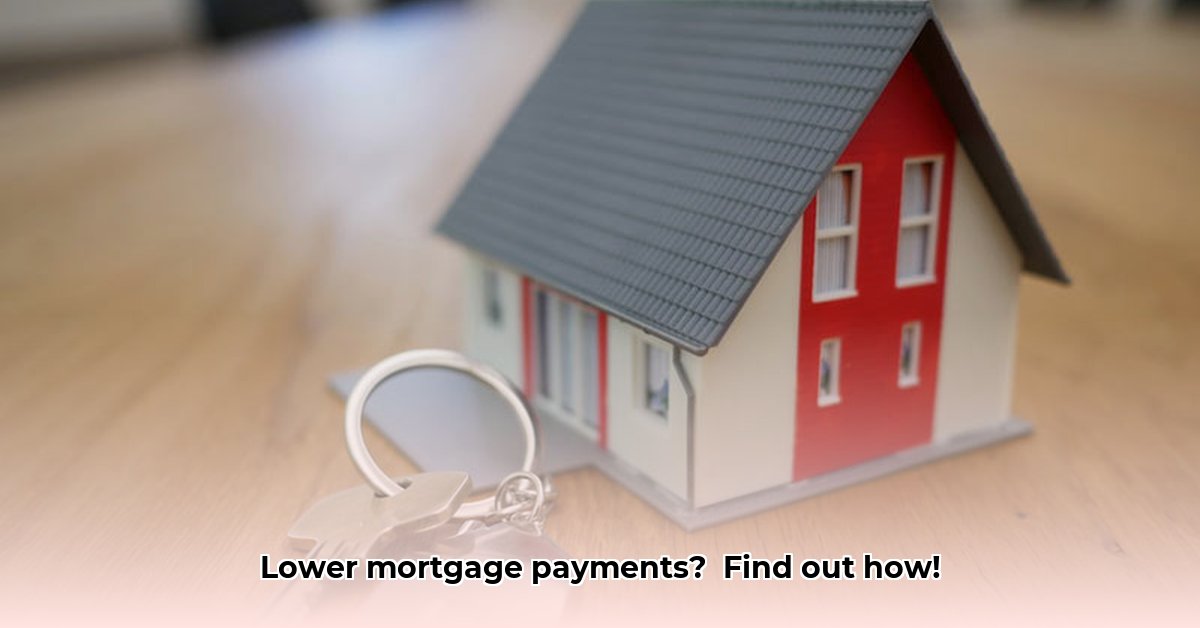# Reamortize Your Mortgage: Lower Payments Now
Are you looking for ways to lower your mortgage payments? A mortgage recasting, also known as reamortization, might be the right solution. It's like hitting a financial reset, where a lump-sum payment reduces your loan balance and lowers your monthly payments. Let's dive into how it works and if it’s a good fit for you.
## Understanding Mortgage Recasting
Reamortizing your mortgage involves making a substantial one-time payment to reduce your principal balance. This recalculates your loan's payment schedule, spreading the remaining balance over the original term. The result is smaller monthly payments without changing your interest rate. This strategy offers financial flexibility.
### Eligibility Requirements
Not everyone qualifies for reamortization. Lenders often require a minimum lump-sum payment, typically between $5,000 and $10,000, or even a percentage of the outstanding principal (e.g., 10%), depending on the loan size. Government-backed loans like FHA, VA, and USDA loans usually aren't eligible, but jumbo loans might be. Also, some lenders stipulate that you must have a history of on-time payments, often requiring no late payments in the past 6-12 months. Contact your lender to confirm your eligibility and their specific requirements.
### Benefits of Mortgage Recasting
Reamortizing your mortgage comes with several advantages:
* **Lower Monthly Payments:** Smaller monthly mortgage payments free up cash for other financial goals or provide more budget flexibility. This offers immediate financial relief.
* **Less Interest Paid Over Time:** Reducing the principal means paying less interest over the life of your loan, resulting in potential long-term savings, though the loan term remains the same.
* **Simpler Process Than Refinancing:** Reamortization is generally quicker and simpler than refinancing, potentially avoiding appraisal fees, closing costs, and credit checks.
### Potential Drawbacks and Costs
Despite its benefits, reamortization has potential downsides:
* **Potential Fees:** Some lenders charge a processing fee for reamortization, typically ranging from $150 to $500. Always inquire about associated fees beforehand. Some lenders may also require a minimum amount of equity in your home before approving a recast.
* **Eligibility Limitations:** Not all loans or lenders offer this option, so your application could be rejected. Confirm your eligibility beforehand. Government-backed loans are often ineligible.
* **Limited Impact on Loan Term:** Reamortization does not shorten the loan term. While monthly payments decrease, the duration of the loan remains the same, which means you'll still be paying off the loan over the original timeframe, albeit at a lower monthly rate.
* **May Affect Tax Deductions:** Because you're paying less interest, your mortgage interest deduction may be smaller, potentially impacting your tax situation.
## Step-by-Step Guide to Mortgage Recasting
Ready to explore the process? Follow these steps:
1. **Check Your Eligibility:** Contact your mortgage lender to ask about reamortization, their specific requirements, potential fees, and your eligibility based on your loan type and financial standing. Clarify the minimum lump-sum payment, any equity requirements, and payment history stipulations.
2. **Evaluate Your Savings:** Assess how much extra money you have for a lump-sum payment, ensuring it doesn't jeopardize other financial obligations or emergency savings. Consider the opportunity cost of using that money for recasting versus other investments.
3. **Compare Savings and Costs:** Calculate your potential monthly savings and factor in any reamortization fees to determine your net savings. Use an online mortgage calculator to estimate your new payment amount. Is it worthwhile?
4. **Submit Your Application:** Complete and submit your lender's application for reamortization with all necessary documentation, including proof of the lump-sum payment and any required financial statements.
5. **Review the New Amortization Schedule:** After processing, review the new amortization schedule to ensure accuracy before finalizing the changes. Pay close attention to the new monthly payment amount and the effective date of the change.
## Reamortization vs. Refinancing: Choosing the Best Option
Both reamortization and refinancing aim to lower monthly payments but differ significantly. Refinancing involves a new mortgage, potentially with a better interest rate and shorter term, but includes closing costs. Reamortization keeps your existing interest rate and loan term, making it faster and less expensive. Choose refinancing to reduce your interest rate or change loan terms, or reamortization for immediate payment relief with a lump sum.
| Feature | Reamortization | Refinancing |
| :--------------- | :----------------------------------------- | :----------------------------------------- |
| Interest Rate | Stays the same | Can change (potentially lower or higher) |
| Upfront Costs | Lower (typically just a processing fee) | Higher (closing costs, appraisal fees, etc.) |
| Loan Terms | Remains unchanged | Can be modified (term length, type) |
| Application | Usually simpler and faster | More complex and time-consuming |
| Eligibility | Varies by lender and loan type; often not available on government-backed loans | More widely available |
| Credit Check | Typically Not Required | Required |
| Appraisal | Typically Not Required | Often Required |
Before making any decisions, it's critical to consult a financial advisor to help you make informed decisions tailored to your circumstances. A financial advisor can assess your overall financial situation, weigh the pros and cons of each option, and help you determine the best course of action to achieve your financial goals.
## Is Mortgage Recasting Right for You? A Checklist
Before you jump into reamortizing your mortgage, consider these key questions:
* **Do you have a significant lump sum available?** Make sure this payment won't drain your emergency fund or hinder other financial goals.
* **Is your loan eligible for recasting?** Check with your lender to confirm that your loan type qualifies.
* **Are you happy with your current interest rate?** If interest rates have dropped significantly since you took out your mortgage, refinancing might be a better option.
* **Have you considered the fees associated with recasting?** Factor in any processing fees to determine the true cost of reamortization.
* **Have you calculated your potential savings?** Use an online mortgage calculator to estimate how much your monthly payments would decrease.
* **What is the opportunity cost?** Could the lump sum be better used for other investments? Consider whether other investments may be more fruitful.
**Key Takeaways:**
* Recasting involves a one-time payment to reduce monthly payments without altering the interest rate or loan term, offering homeowners greater financial stability.
* It’s ideal for those with extra cash and a stable financial situation.
* Government-backed loans (FHA, VA, USDA) may not qualify for recasting, requiring alternative strategies.
* Compare recasting with refinancing to identify the best solution for your financial situation, ensuring long-term savings and stability.
In conclusion, reamortizing your mortgage can be a useful tool for lowering your monthly payments and freeing up cash flow. However, it's important to carefully weigh the pros and cons, consider your individual financial situation, and consult with a financial advisor before making a decision.
Latest posts by Turthledeep (see all)
- Why an App Appeared on My Phone Unexpectedly - November 22, 2025
- How to Stop Unwanted Apps from Automatically Downloading on Android - November 21, 2025
- Why Are Android Games Installing Themselves on Your Phone? - November 20, 2025










